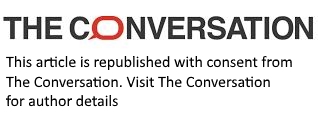What is the ‘glass cliff’ phenomenon – and why do women often find themselves on the precipice?
- Written by Kerrie-Anne Hammermeister, PhD Candidate in the School of Humanities and Communication, University of Southern Queensland

Speaking to the media after being named leader of the Liberal Party, Sussan Ley was asked if this appointment was an example of the “glass cliff effect”.
Ley said “I don’t accept that”. She went on:
I do say it sends a signal to the women of Australia that the Liberal Party has elected its first woman leader but my agenda is much more than that.
Most of us are familiar with the concept of the “glass ceiling”, a metaphor used to describe the invisible barriers which prevent women from succeeding in senior leadership – and Ley could be seen as breaking the glass ceiling of the Liberal party.
But the “glass cliff” applies to women who are elevated to positions of leadership in a time of crisis, meaning they are perceived as having a high probability of failure and will take the fall for their organisation.
The glass cliff evokes imagery of a woman being at the top of a mountain cliff. Being on the cliff is a dangerous position: there is a high chance of falling – or being pushed off.
Times of misfortune
Against the historical backdrop of male-dominated leadership, the metaphor was coined to reflect women’s experience of leadership selection in times of organisational misfortune and crisis.
The “glass cliff” has sometimes been invoked in misogynist ways to downplay the strengths of women in leadership, saying they have been put in a position of leadership with the express belief they will fail. But it does describe a commonly seen phenomenon which is important to observe and understand.
There are many prominent examples of women who have been associated with the phrase.
British Prime Minister Liz Truss was elevated to the role at a time of significant uncertainty, and was in the position for just 45 days.
US Presidential candidate Kamala Harris was given minimal time to campaign and establish herself as a genuine opponent to Republican candidate Donald Trump.
Former Yahoo CEO Carol Bartz, who was appointed when the tech company was failing and share prices were down before being unceremoniously dumped via a phone call.
‘Think female’
Some academics believe that these women aren’t placed in the position of the glass cliff to be the fall guy, but instead these appointments relate to women’s perceived ability to handle organisational crises. They propose an alternative phrase: “think crisis – think female”.
This phrase suggests women leaders perform better than men in a crisis, partly due to the assumption that women will garner more support than men in such times.
It is based on stereotypes of women’s perceived ability to build and repair relationships and reputations.
Both phrases link women leaders and crises. But the glass cliff explains how women are elevated into positions of leadership in turbulent times and are blamed when organisations fail.
Professional risk
The phenomenon of the glass cliff is a professional risk for women in leadership.
Organisations may prey on the career ambitions of outgroup women, knowing that they are more likely to accept any leadership position, even a precarious one, in order to advance their career.
The privilege of the ingroup men, on the other hand, means they are protected from taking on a leadership position with risk and volatility.
Women leaders taking on these roles in turbulent times are also exposed to greater scrutiny from internal and external stakeholders, including individual performance criticism.
If a woman leader then fails, her performance is seen to reinforce gender stereotypes about women’s leadership competency.
Further complicating this context are gendered stereotypes that assume women leaders have exceptional people skills, meaning senior women in high-risk leadership roles receive less support and fewer resources than their male counterparts.
The glass cliff presents a double bind for women leaders. If women leaders behave in stereotypically feminine ways they are seen as weak or indecisive. By contrast, if they behave counter to this they are labelled as harsh and aggressive.
Either way, the glass cliff awaits.
The glass cliff phenomenon draws our attention to the way in which women are set up to fail in high-risk risk leadership roles. But the metaphor also reveals the ongoing gender discrimination and stereotype bias women experience in taking on professional leadership roles.
Authors: Kerrie-Anne Hammermeister, PhD Candidate in the School of Humanities and Communication, University of Southern Queensland





